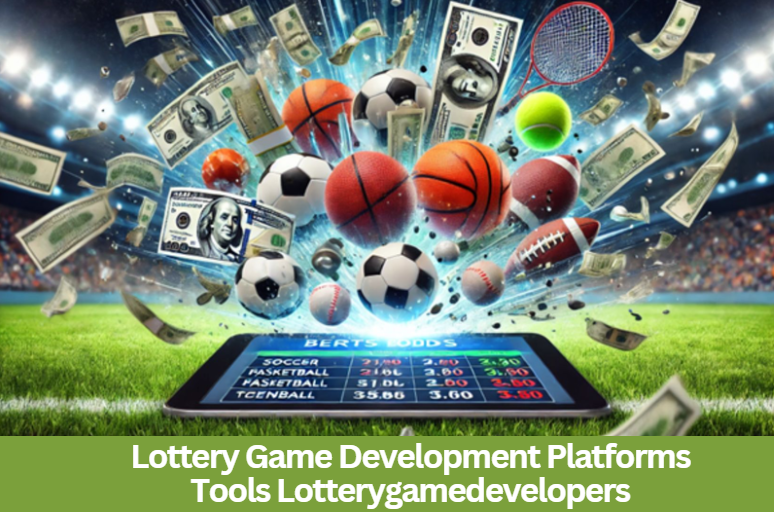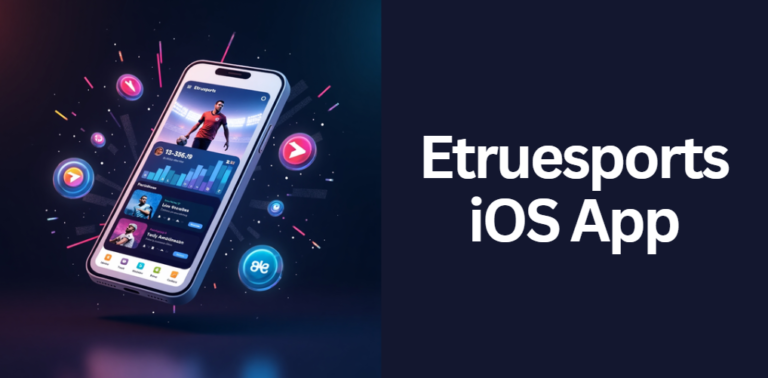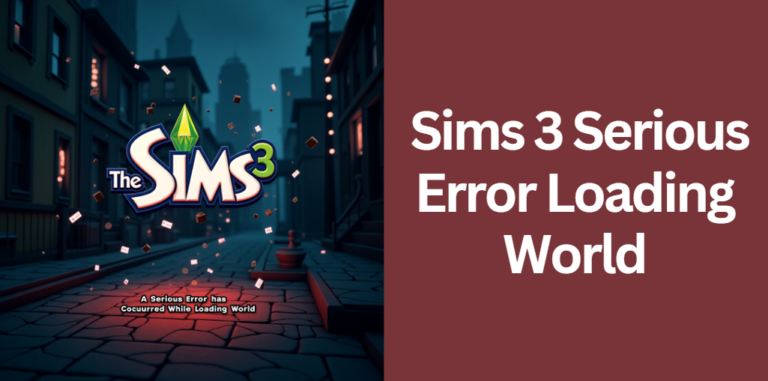The Ultimate Comprehensive Guide to Lottery Game Development Platforms Tools Lotterygamedevelopers
Lottery gaming has long been a popular form of entertainment, and with the advent of digital technology, its evolution has reached new heights. In this guide, we explore the transformation of traditional lottery systems into modern, technology-driven platforms.
Whether you are a lottery operator, developer, investor, or industry analyst, this article will equip you with comprehensive insights into the Lottery Game Development Platforms Tools Lotterygamedevelopers ecosystem.
The purpose of this guide is to serve as a one-stop resource that covers every aspect—from planning and design to technical integration and regulatory compliance. Unlike other guides, our content is detailed and enriched with examples, lists, and tables to ensure maximum readability and practical use.
Understanding Lottery Game Development
What Is Lottery Game Development?
Lottery game development refers to the process of creating digital lottery systems that allow players to purchase tickets, select numbers, and participate in various lottery games online. These systems range from traditional draw-based lotteries and scratch-off games to innovative instant win and blockchain-based lottery formats.
By digitizing lottery operations, developers can streamline processes, improve transparency, and enhance player engagement.
The Importance of Digital Lottery Platforms
Digital lottery platforms not only broaden the reach of lottery games but also provide enhanced operational benefits. Operators enjoy improved revenue streams, while players benefit from increased convenience and interactive gameplay.
The evolution from legacy systems to cloud-based and mobile-first platforms has significantly boosted both performance and player satisfaction.
Evolution of Lottery Game Development Platforms
The journey of lottery game development has seen a remarkable shift from manual processes to sophisticated, automated systems. With the integration of technologies such as artificial intelligence, blockchain, and mobile computing, modern platforms now offer real-time updates, secure transactions, and engaging user interfaces. This guide will detail how these advancements shape the Lottery Game Development Platforms Tools Lotterygamedevelopers landscape.
Core Components of a Lottery Game Platform
Front-End User Interface (UI) and Experience (UX)
An intuitive and attractive front-end is critical for engaging players. A well-designed UI not only reflects the brand but also makes it easy for players to navigate and participate in games. For example, modern lottery platforms feature responsive designs that work seamlessly on smartphones, tablets, and desktops. A table below summarizes key UI/UX features:
| Feature | Description |
|---|---|
| Responsive Design | Adapts to various devices and screen sizes |
| Customizable Themes | Allows operators to align the interface with brand identity |
| Interactive Elements | Includes animations, drag-and-drop features, and dynamic content |
| User-Friendly Navigation | Simplifies the process of ticket selection and game participation |
Back-End Management Systems
The back-end of a lottery platform handles everything from player account management to ticketing and transaction processing. A robust Player Account Management (PAM) system is essential to ensure secure user registration, verification, and loyalty program integration.
Additionally, automated lottery management systems track sales, generate real-time results, and ensure regulatory compliance through secure random number generators (RNG).
Security & Compliance
Security is paramount in lottery game development. Modern platforms implement advanced encryption protocols, secure payment gateways, and certified RNG systems to prevent tampering and fraud.
Compliance with international standards (such as those set by GLI and WLA) is also essential, providing operators with the assurance that their systems are both safe and legally sound.
Payment Gateways & Monetization
Lottery platforms must support a range of payment methods, from traditional credit/debit cards to digital wallets and even cryptocurrencies. Integration with reliable payment gateways not only ensures secure transactions but also broadens the market reach.
Monetization strategies may include subscription models, in-app purchases, and advertising partnerships, all contributing to a sustainable revenue model.
Integration & APIs
For a platform to be fully functional, it must integrate smoothly with various third-party services, such as CRM systems, analytics tools, and external gaming content providers. Well-documented APIs play a crucial role in ensuring seamless integration, enabling operators to expand features and personalize the gaming experience based on player data.
Key Platforms and Tools for Lottery Game Development
Overview of Leading Platforms
The landscape of Lottery Game Development Platforms Tools Lotterygamedevelopers is rich with options. Operators can choose between turnkey solutions—which offer fast deployment—and custom platforms that provide complete control over features and integrations.
Leading providers such as BR Softech, GammaStack, and Chetu have built reputations for delivering robust, scalable solutions that meet industry demands.
Game Development Engines
Game engines like Unity and Unreal Engine are frequently employed in lottery game development due to their flexibility and powerful feature sets. For instance, Unity’s cross-platform capabilities make it ideal for creating engaging 2D and 3D lottery games, while Unreal offers stunning graphics and performance for high-end gaming experiences.
Blockchain & NFT Integration Tools
With the rise of decentralized finance and digital collectibles, blockchain technology has become a game-changer in lottery game development. Solutions like BlockLot and DeLottery use smart contracts to create tamper-proof, transparent lottery systems.
These platforms enable secure transactions, verifiable RNG, and even NFT-based lottery tickets that enhance player trust and engagement.
Essential SDKs, Libraries, and Testing Tools
Developers often leverage various software development kits (SDKs) and libraries to build, test, and deploy lottery games efficiently. Whether opting for open-source libraries or proprietary tools, it’s important to choose resources that support robust RNG, user-friendly interfaces, and comprehensive analytics.
In addition, rigorous testing tools help ensure that every component of the platform is secure, reliable, and compliant with regulatory standards.
Step-by-Step Guide to Developing a Lottery Game Platform
Planning and Requirement Analysis
The journey begins with thorough market research and a detailed requirement analysis. This phase involves studying competitor platforms, defining key performance indicators (KPIs), and identifying the target audience. It’s crucial to map out all functionalities—from ticket sales and draw management to payment processing—and set clear goals for what the platform should achieve.
Design Phase
Once requirements are defined, the design phase takes center stage. A strong focus is placed on UX/UI design to create an interface that is both visually appealing and user-friendly. Wireframes and prototypes are developed to visualize the platform’s flow and layout, ensuring that all interactive elements enhance the overall player experience.
Development Phase
During the development phase, the chosen tech stack is implemented to build both front-end and back-end components. Developers adhere to coding best practices, ensuring that the system is scalable, secure, and easy to maintain. Integration of APIs and third-party services is carefully planned to provide seamless connectivity with external systems like payment gateways and analytics tools.
Testing & Quality Assurance
Quality assurance is essential to deliver a flawless product. Comprehensive testing, including functional, load, and security testing, ensures that the platform operates smoothly under all conditions. Rigorous checks for compliance with international gaming standards guarantee that the system is fair and tamper-proof.
Deployment and Launch Strategies
Once development and testing are complete, the platform is ready for deployment. A soft launch can help gather initial user feedback, while a full-scale rollout is planned to capture a wide audience. Effective marketing strategies, such as social media campaigns and influencer partnerships, are vital in generating excitement and driving user acquisition.
Post-Launch Support and Maintenance
Even after a successful launch, ongoing support is critical. Regular updates, performance optimizations, and customer support ensure that the platform remains secure and competitive. Continuous monitoring through integrated analytics tools helps operators fine-tune features and improve player retention over time.
Case Studies and Success Stories
Examining real-world examples can provide valuable insights into successful lottery platform development. Traditional lottery platforms have transformed operations with enhanced user experiences and streamlined processes.
Meanwhile, blockchain-based solutions, such as NFT lotteries, have introduced transparency and security that captivate a modern, tech-savvy audience. Comparative case studies highlight what works best, offering lessons learned that can be applied to your own platform development.
Comparative Table of Case Studies
| Case Study Type | Key Success Factors | Notable Outcome |
|---|---|---|
| Traditional Lottery | User engagement, secure back-end management | Increased revenue and improved player retention |
| Blockchain Lottery | Transparent RNG, smart contracts, NFT integration | Enhanced trust and rapid user growth |
| Mobile-First Lottery App | Seamless mobile integration, real-time updates | High download rates and robust performance |
Best Practices and Expert Tips
Optimizing user experience is at the heart of successful lottery platforms. Experts suggest focusing on intuitive design, fast load times, and engaging interactive elements. Security should be paramount; implementing certified RNG systems and anti-fraud measures will protect both the operator and the players.
Staying compliant with local and international regulations is non-negotiable, and leveraging data analytics can provide actionable insights to continuously improve the platform. Here are a few expert tips in list form:
- Enhance UI/UX: Invest in high-quality design and user testing to ensure players have a seamless experience.
- Prioritize Security: Use industry-certified RNG and encryption to protect user data and transactions.
- Stay Compliant: Keep abreast of regulatory changes to ensure your platform meets all legal requirements.
- Leverage Analytics: Use real-time data to monitor player behavior and optimize game performance.
- Integrate Flexibly: Ensure your platform can easily integrate with various third-party services for extended functionality.
Future Trends in Lottery Game Development
The future of Lottery Game Development Platforms Tools Lotterygamedevelopers lies in emerging technologies. Artificial intelligence is set to revolutionize player personalization and predictive analytics. Virtual and augmented reality may soon provide immersive lottery experiences, while blockchain and NFT technologies continue to gain traction, offering decentralized, transparent gaming models.
Additionally, mobile-first designs and cross-platform compatibility will remain critical as users increasingly demand seamless, omni-channel experiences.
FAQs
1. How Can Advanced Gamification Strategies Enhance User Retention in Lottery Platforms?
Lottery platforms are increasingly incorporating innovative gamification techniques beyond traditional gameplay. Operators are experimenting with augmented reality bonus rounds, interactive mini-games integrated with the lottery system, and social leaderboard challenges that foster community competition. These creative strategies not only increase user retention but also encourage repeat participation by rewarding players with digital badges, exclusive access, or special bonus entries.
2. In What Ways Do Modern Lottery Platforms Support Regional Customization?
Contemporary lottery platforms are designed to be highly adaptable to regional markets. This means they offer multilingual interfaces, localized themes, and currency conversion options that align with regional economic practices. Customizable visual elements and culturally relevant game mechanics help ensure that the platform resonates with diverse audiences while complying with local regulations and gaming standards.
3. What Challenges Arise When Integrating Legacy Lottery Systems With Modern Digital Solutions?
Integrating outdated, legacy lottery systems with new digital platforms can be complex. Challenges often include maintaining data integrity during the migration process, updating or completely overhauling the user interface to meet current design standards, and establishing secure, real-time communication between the legacy components and new modules. Overcoming these hurdles requires a thoughtful approach to system architecture and thorough testing.
4. How Can Machine Learning Improve Lottery Game Development Beyond Traditional Analytics?
Machine learning (ML) offers an exciting edge by enabling platforms to analyze player behavior more dynamically. Unlike traditional analytics, ML algorithms can adapt game difficulty in real time, tailor personalized game recommendations, and identify subtle patterns that signal emerging trends or potential fraud. This results in a more engaging and secure gaming environment that continuously evolves with its user base.
5. What Is the Typical Timeline for Developing a Cutting-Edge Lottery Platform?
The development timeline for a modern lottery platform can vary widely based on complexity and customization requirements. Generally, a fully functional platform—complete with secure back-end systems, engaging front-end design, and integrated analytics—might take anywhere from three to six months. This period includes stages such as requirement gathering, design and prototyping, development, comprehensive testing, and final deployment. Each project’s timeline is unique and is often influenced by regulatory demands and the scale of integration needed.
Conclusion
In summary, this guide has provided a detailed, comprehensive look into the world of Lottery Game Development Platforms Tools Lotterygamedevelopers. We have explored every component—from planning and design through to development, testing, and deployment—highlighting the best practices, tools, and trends that can help you build a secure, engaging, and scalable lottery platform.
Whether you are just starting out or looking to upgrade your existing system, this guide offers practical insights and actionable strategies to help you succeed in the competitive lottery gaming industry.
By following this detailed roadmap and leveraging the latest technologies, you can not only meet industry standards but also set new benchmarks for excellence. Embrace innovation, prioritize security and user experience, and watch your lottery platform transform into a powerhouse that dominates the market.
More Posts
Ultimate Guide to 0-Saiji Start Dash Monogatari Manga Coffee Manga
Sony FL201 1 517 141 11 Replacement Parts USA – The Ultimate Comprehensive Guide
Ultimate Guide to LM7 Upgrading To 1 Cable Alternator
Comprehensive Guide to Andirz_Mal22_Traitttrackerinjector_v.2.0.0
Comprehensive Guide to the Ardwolf 2-In-1 Smoke And Co Detector






